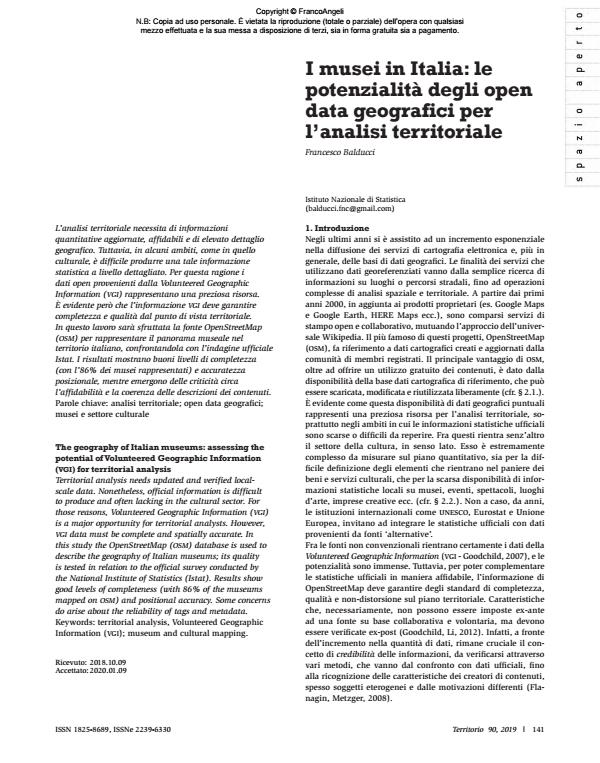The geography of Italian museums: assessing the potential of Volunteered Geographic Information (vgi) for territorial analysis
Journal title TERRITORIO
Author/s Francesco Balducci
Publishing Year 2020 Issue 2019/90
Language Italian Pages 13 P. 141-153 File size 497 KB
DOI 10.3280/TR2019-090016
DOI is like a bar code for intellectual property: to have more infomation
click here
Below, you can see the article first page
If you want to buy this article in PDF format, you can do it, following the instructions to buy download credits

FrancoAngeli is member of Publishers International Linking Association, Inc (PILA), a not-for-profit association which run the CrossRef service enabling links to and from online scholarly content.
Territorial analysis needs updated and verified localscale data. Nonetheless, official information is difficult to produce and often lacking in the cultural sector. For those reasons, Volunteered Geographic Information (vgi) is a major opportunity for territorial analysts. However, vgi data must be complete and spatially accurate. In this study the OpenStreetMap (osm) database is used to describe the geography of Italian museums; its quality is tested in relation to the official survey conducted by the National Institute of Statistics (Istat). Results show good levels of completeness (with 86% of the museums mapped on osm) and positional accuracy. Some concerns do arise about the reliability of tags and metadata.
Keywords: Territorial analysis, Volunteered Geographic Information (vgi); museum and cultural mapping.
Francesco Balducci, I musei in Italia: le potenzialità degli open data geografici per l’analisi territoriale in "TERRITORIO" 90/2019, pp 141-153, DOI: 10.3280/TR2019-090016